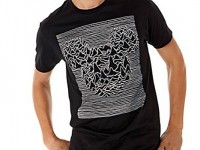James Clifford’s “Museums as Contact Zones” provides fantastic contextualization of the museum: caught up in ongoing and active process of “imagining” culture (to borrow from Benedict Anderson) and all the messy issues that go along with such a process. Two of the most salient points from this reading for me are the ways in which objects transform in the process of contact, and Clifford’s call for a move beyond binary notions of culture.
Writing about the Rasumssen Collection, he states “[the objects] could never be entirely possessed by the museum. They were sites of historical negotiation, occasions for an ongoing contact” (194). I find this interesting, that the object becomes a site of negotiation, and in some ways I wish we had read this article before Fiona Cameron’s, last week. Her call for a postmodernist/structuralist approach to museum interpretation is revealed as much more complex when read through Clifford’s article. Clifford does an excellent job of muddying the waters of cultural negotiation that unfolds within the collection of a museum, and his point that objects, or collections, becoming the location of contesting media sheds light on the need for some kind way to represent all of the available stories of an object. It is not, he points out, just a process of threading meaning together from two different sides, one colonial and one indigenous (usually), but much more mixed, or hybrid. This is the second point I pulled from this reading: Clifford’s attempt to move away from binaries.
Clifford critiques authors such as Walsh and Harvey for offering a postmodern understanding that is still too binary. Instead he argues that the idea of the contact zone “complicates diffusionist models, whether they be celebratory…or critical” (216). Far from being an easy glorification of multiculturalism, museums must work hard to fully “express the interests of nation-states, of local and tribal communities, of transnational capital” (216). If Fiona Cameron’s call for new media, or technology, is to offer an audience multiple meanings of a collection or object, how can this be done in a museum setting that avoids the easy (or easier) method of depicting two sides, such as colonizer and colonized? How, technology aside, does an institution represent the multiple levels of cultural, contemporary hybridity that a collection of objects might suggest, but surely will not convey without contextualization? How is this done in a museum setting, where passersby may only spend a few minutes (at best) looking at an object and supporting material?
Michael Brown’s article, “Exhibiting Indigenous Heritage in the Age of Cultural Property,” serves us with a number of examples that suggest that this work is still quite difficult. We, in the universal “We” that Brown seems to advocate for, have yet to learn how to become comfortable with our own hybridity. Cultural exchange happens, and the process of sorting out power imbalances inherent to cultural contact while appealing to the ethics of appropriate representation is still in process, and it is a process very prone to critique. I would question, however, whether or not this cultural process is going to work out in the museum space, but not other spaces. In response to my post last week, Claude pointed out
 that real adoption of cultural hybridity, or postmodern narratives, must begin in the education system. I agree with this, but I think education systems are just as fraught with the same, and potentially more, hazards of cultural appropriation and appropriate representation of other cultures as any museum. Perhaps it is the recognition of cultural exchange in popular culture, the free exchange of culture, that can be witnessed in action. As example, I’ll part with this image, a new shirt offered by Disney using the motif from Joy Division’s “Unknown Pleasures” album, no doubt a rich source to mine for discussions of cultural exchange.
that real adoption of cultural hybridity, or postmodern narratives, must begin in the education system. I agree with this, but I think education systems are just as fraught with the same, and potentially more, hazards of cultural appropriation and appropriate representation of other cultures as any museum. Perhaps it is the recognition of cultural exchange in popular culture, the free exchange of culture, that can be witnessed in action. As example, I’ll part with this image, a new shirt offered by Disney using the motif from Joy Division’s “Unknown Pleasures” album, no doubt a rich source to mine for discussions of cultural exchange.

Very insightful post, Tyler–you do a fantastic job of bringing these readings together, setting us up really well for a great conversation today. You are absolutely right that Cameron, Clifford, and Brown illustrate how complex a challenge post-colonial (many would argue that we in BC are not in a post-colonial situation at all, on un-ceded Coast Salish territory) exhibition and museum work can be, and importantly, that these projects are in no way separate from broader cultural and political contexts, Our educational ideologies and systems are a big part of this.
I like your point, Tyler, about the role of that popular culture plays, for better or for worse…
Even within Colonization there are many scenarios and interactions that happen. While it seems difficult to separate them out of the broader understandings of the Colonizer and the Colonized (the generalizations that both education and popular culture certainly uphold!), it seems like there are options for presenting the intricacies instead of just the broad generalizations.
While contextualization is necessary – couldn’t comparison between various levels of hybridity create a new context that is separate from the broad cultural identifiers?